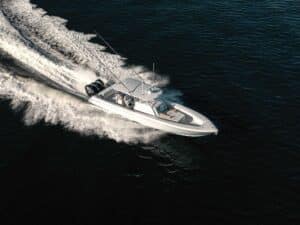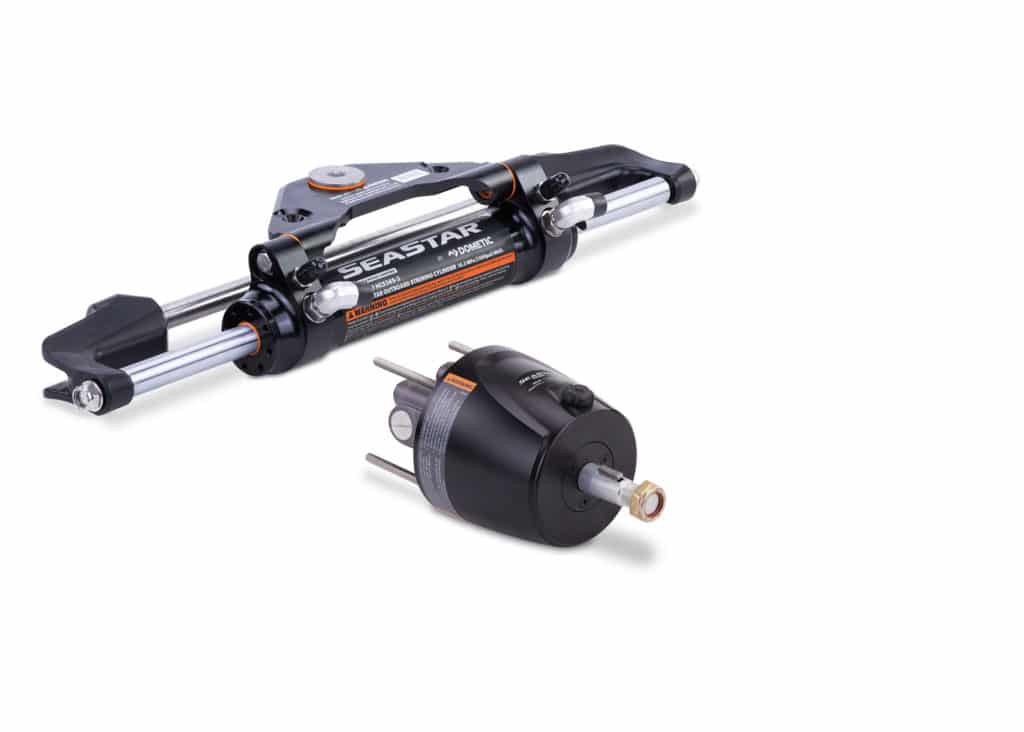
Marine hydraulic steering systems have for decades served as smooth-turning mainstays aboard outboard-powered fishing boats. In fact, today’s hydraulic steering systems are so reliable that many boating anglers rarely think about them until they wear out or need fixing.
Yet, boat owners can extend the life of hydraulic steering system components even further with regular, yet simple, inspections and maintenance steps, says Brian Dudra, vice president and general manager for SeaStar Solutions. A market leader in marine steering systems, SeaStar is now a division of the Dometic Group.
“While each SeaStar system is designed for the harsh marine environment, like any critical control system, it requires periodic checks and maintenance,” Dudra explains. “As per your owner’s manual and product labels, hydraulic steering systems should be inspected prior to every use for fluid level, steering response, leaks, or worn/binding components.” In addition, most systems require a small amount of maintenance from a qualified dealer every six months for detailed inspections and greasing of key areas, he adds.
Key areas on outboard hydraulic steering systems include hoses, hose connections, the steering cylinder and cylinder shaft, the support arm, the tiller arm connection, the steering helm where the wheel attaches, the steering wheel, and the hydraulic fluid. Let’s take a look at how to inspect and care for each of these areas.
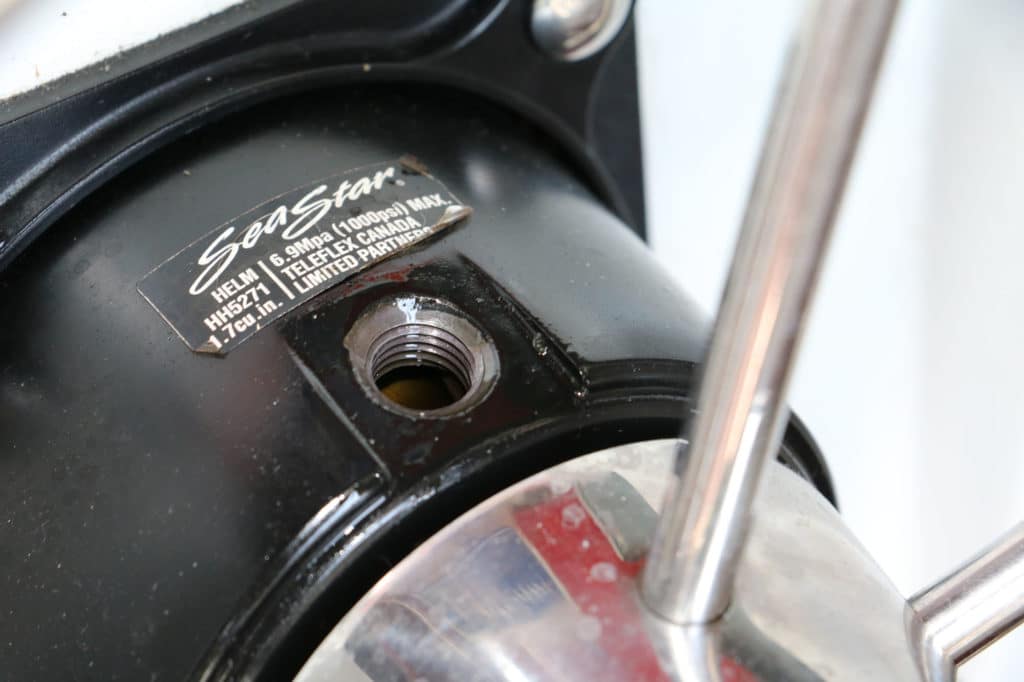
Steering Helm
When inspecting the helm, make sure the steering cylinder and helm hydraulic hose connections are tight. Dudra recommends greasing the helm shaft when installing the steering wheel to facilitate removal in the future. Check the hydraulic fluid level inside the helm by unscrewing the fill plug and looking inside. “The level should be 1/8- to 1/4-inch below the lowest thread in the fill port,” he says. “If not, fill the helm to the proper level.”
Check the steering response when turning the wheel. It should respond within a quarter turn. If not, the system might need fluid or there might be air in the system, which requires purging. For tilt-and-lock steering helms, ensure that the plastic covers are properly secured in place.
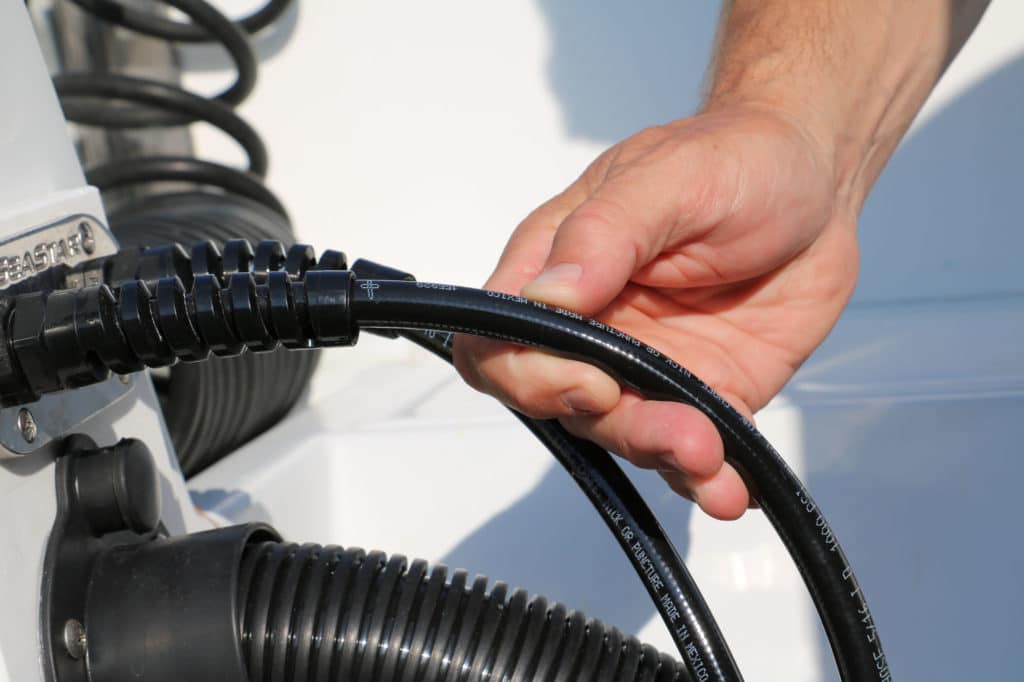
Hydraulic Hoses
“Our hoses are a custom multi-layered composite design, engineered specifically for our systems,” Dudra says. When inspecting these hydraulic hoses, run your hand down them to feel for cuts, chafing or cracks. If you discover this kind of wear, have a qualified service shop replace the suspect hoses.
Also, inspect the hose fittings to ensure they are tight. Feel for hydraulic fluid leaks or weeps by running a finger around the fitting. If you find a leak, try tightening the fitting. If that fails to stem the leak, arrange to have a qualified service shop address the issue. “If a leak is present, you will want to fix the leak and use our hydraulic steering fluid to ensure optimum performance and safety,” Dudra points out.
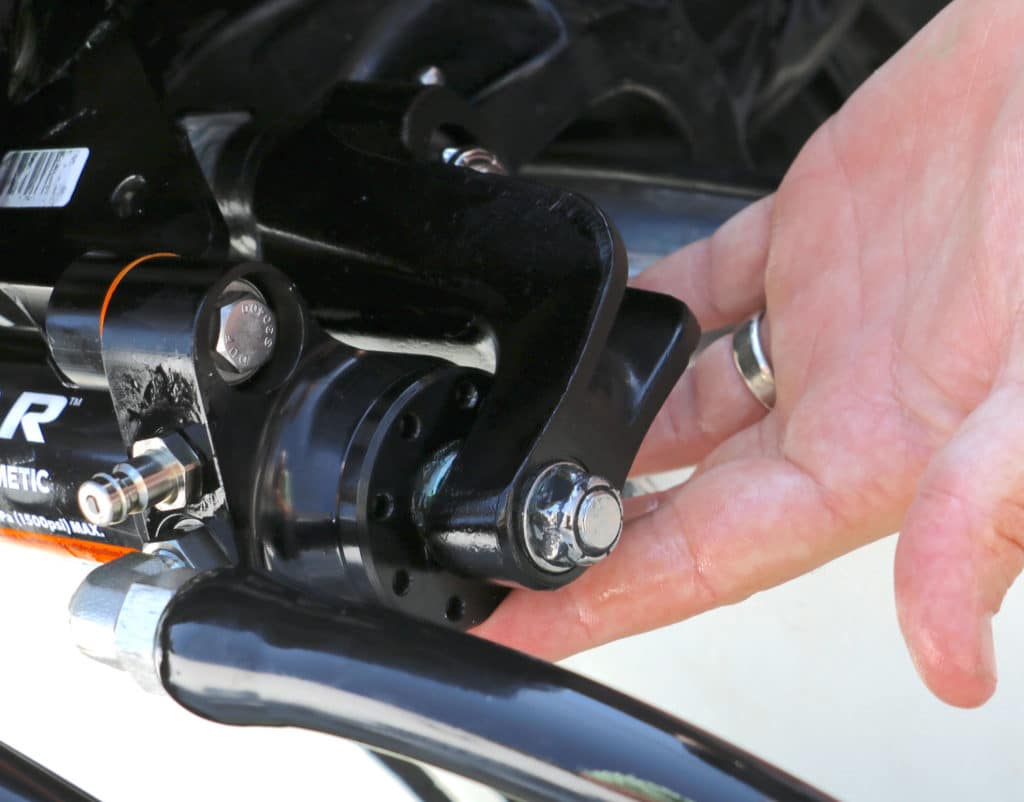
Steering Cylinder
Front-mount cylinders are the most common type found on hydraulic steering systems for outboard-powered boats. Cylinders are engineered and built to operate smoothly for years while being splashed with salt water. Regular inspections should focus on the cylinder hose connections and glands on each end of the cylinder to ensure that there are no leaks.
If the hose fittings are weeping fluid, the hoses might require replacement. The same applies to the glands, which seal and wipe the cylinder rod as the cylinder moves back and forth. SeaStar offers a gland replacement kit and O-ring seals for the bleeders and other fittings to fix leaks in this area.
Follow the directions carefully or turn the job over to a qualified marine shop. To ensure the steering is secure and tight, check all of the assembly nuts for proper tightness, including the adjusting nut on the starboard side of the support rod, which helps remove slack from the steering system.
After each use it is good practice to spray the steering cylinder down with fresh water to prevent damaging salt buildup.
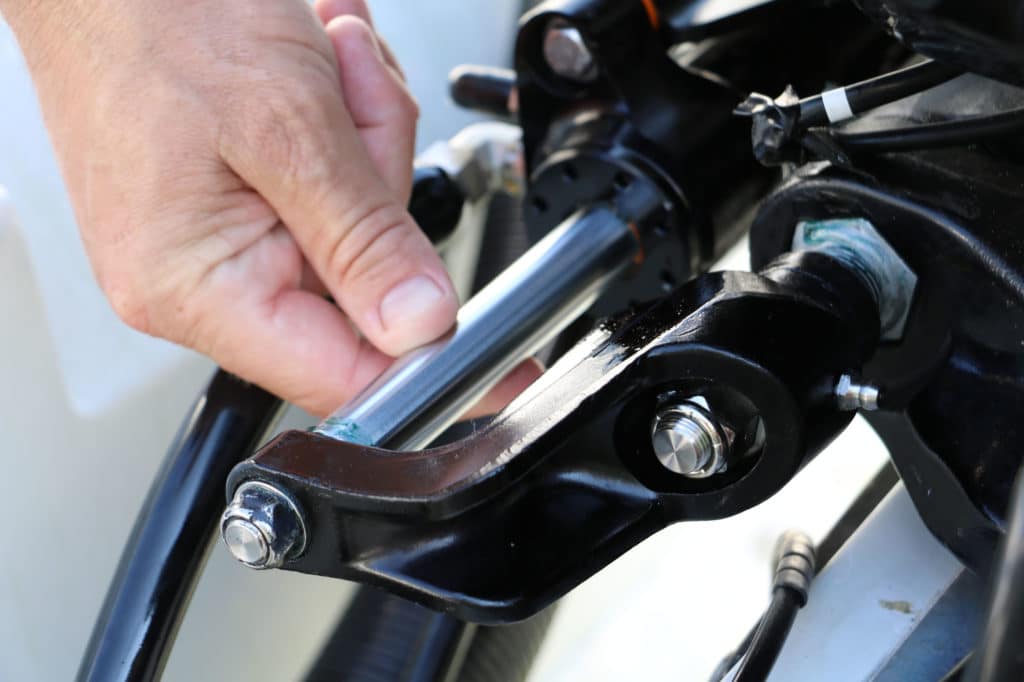
Cylinder Shaft and Support Rod
These components related to the steering cylinder deserve special attention. Carefully inspect the cylinder shaft for salt buildup, corrosion, nicks or scratches that might damage the cylinder. Any major damage might require replacement of the entire cylinder.
The support rod should be removed and inspected annually. The support rod and outboard tilt tube must be cleaned of all old grease and debris prior to re-applying a good quality marine grease before re-installing.
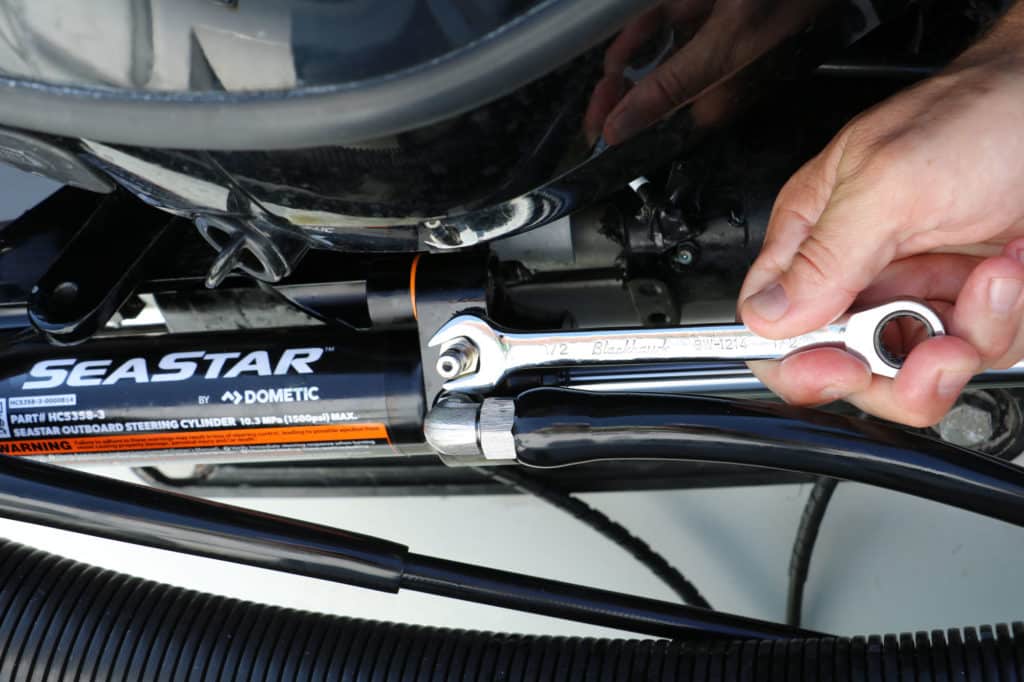
Purging the System
Air can find its way into the hydraulic system through leaks or when replacing components, and that will make the steering sloppy, unresponsive, a bit noisy and even unsafe. The air must be purged in a process called “bleeding.” Your owner’s manual will explain the process if you want to do it yourself, but it usually requires two people and can become messy from spilled hydraulic fluid. If you lack the confidence, tools or manpower to get the job done, ask a qualified marine shop to handle this.
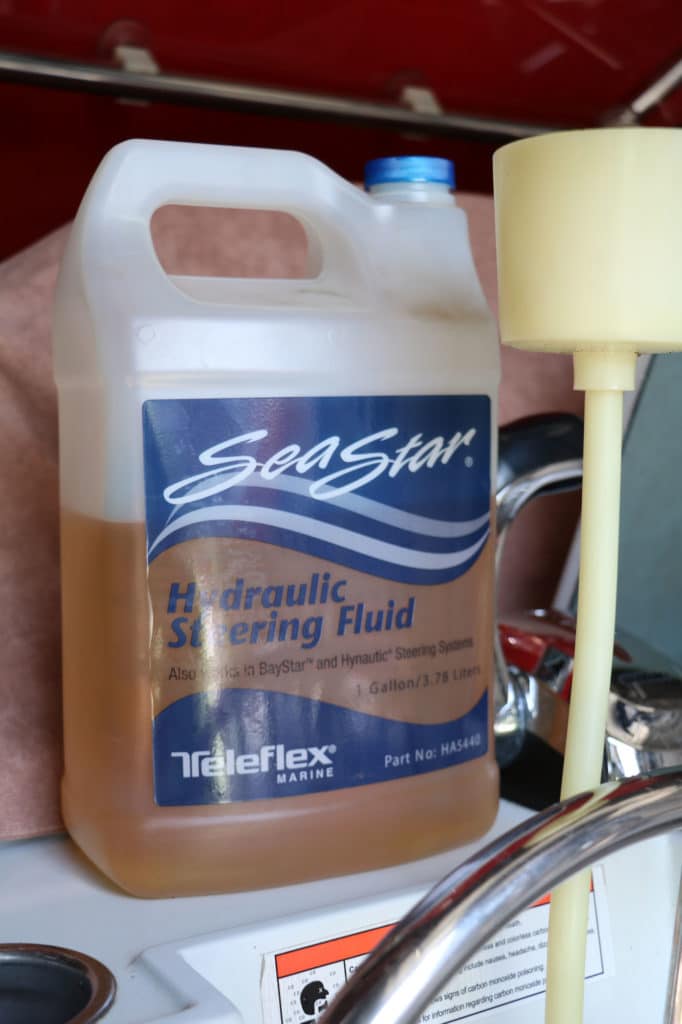
Water Intrusion
Water can also find its way into the hydraulic steering and eventually corrode internal components that can damage the system. “This is a subjective examination, but can be performed by taking a syringe and sampling the fluid in the helm reservoir,” Dudra advises. “If the fluid looks like ‘chocolate milk’ then the fluid is likely contaminated with water.” If this occurs, the entire system must be inspected for leaks. Once these are fixed, the system should be flushed thoroughly with clean oil to remove any contaminated oil that can cause future internal damage.
Read Next: SeaStar Optimus Universal Electric Steering Actuator
“Steering is a vitally important control system on your boat,” Dudra says. “The ability to safely and confidently maneuver at speed or in close quarters makes for an enjoyable and safe day on the water.”




